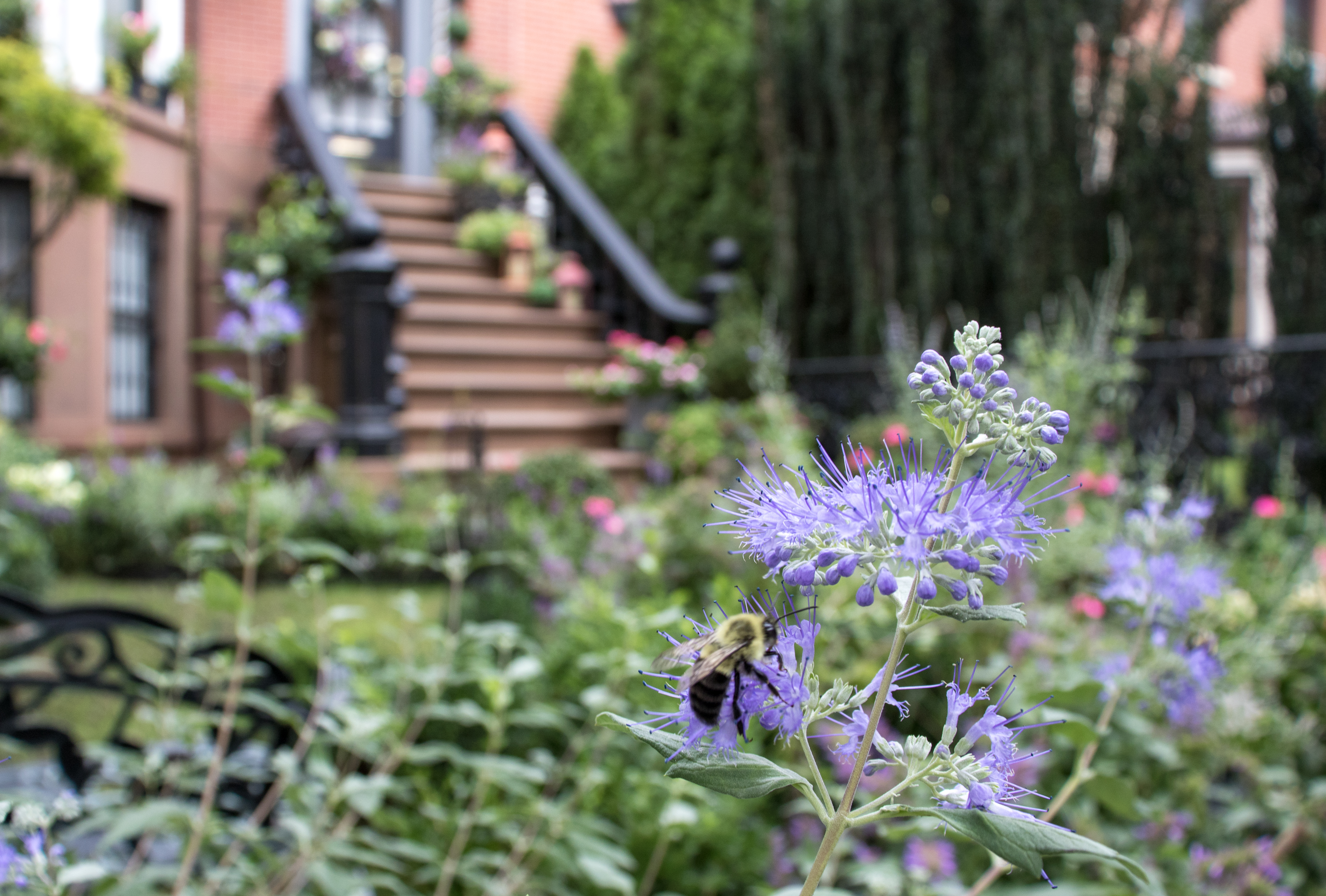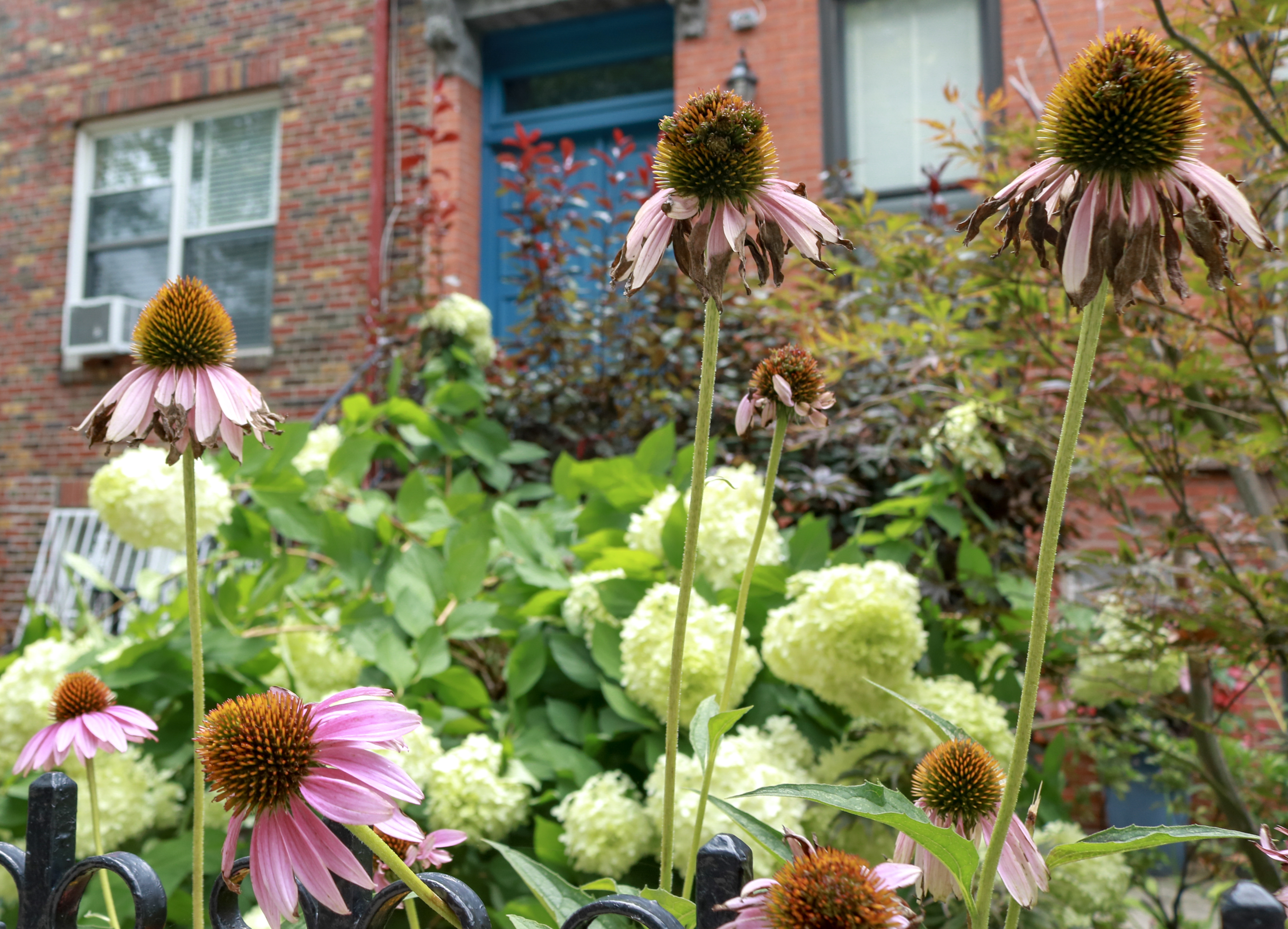BY LIZ SADLER CRYAN | Alas, summer is more than two-thirds over, and cooler weather is just around the corner. On a positive note, fall is the perfect time to give your yard, garden or window boxes a seasonal refresh.
Some planning and forethought can yield a colorful bounty of flowers come spring. And gardeners say fall is the best time to plant new trees and shrubs.
“Fall is a really good time for planting any kind of big perennials, trees or shrubs,” said gardener Krissie Nagy of BK Bumpkin. “In the winter, they’re allowed to work on their root systems and establishing their roots and not worry about any leafy, vegetative growth.”

If you have window boxes, Nagy recommends hardy plantings, such as ornamental cabbages, kale and dwarf conifers to last through winter. Mums also will survive the first couple frosts, she said.
Carmen DeVito of Groundworks Inc. clears out window boxes by Thanksgiving and plants a mix of dried, live and cut evergreens. She uses a spray called Wilt Pruf to protect them in the coldest months.
“I combine pine cones, along with living evergreens and cut evergreens to make the look nondenominational and wintery,” she said. “We buy giant sugar cones, and plants like junipers and grasses and combine that with beautiful cut boughs.”
Other outdoor containers should be raised at least a half-inch off the ground to prevent freezing and cracking.
“If you have ones that are ceramic, you want to empty them out, turn them upside down and put them in a place like a garage or a shed or an attic,” DeVito said.
For gardens, Nagy recommends a fresh layer of hardwood bark mulch to aerate the soil, and cutting back annuals after the first frost. Raking up leaves is another way to prepare your garden or yard for the winter months.

“I like to do it lazy gardener way — wait until all of them fall down, then take them out for compost,” Nagy said. “Sometimes, I will leave some leaves in the garden, so that come springtime, you’ll have sort of a leafy semi-decomposed product that can fertilize your plants.”
DeVito recommends a thorough fall cleanup.
“We like to really clean up the gardens in the fall, cut down most of the perennials,” she said, “so in the spring it’s not a mess of dead leaves and decaying branches to clean up.
“I really believe in doing as much as possible in the fall,” she added. “This way, in spring you can really focus on design and planning and thinking about all the new things you want to bring in your garden, and not all the backbreaking work you have to do.”
October and November are the best months to plant bulbs like crocuses, snowdrops, Spanish bluebells, grape hyacinth and allium, said Christina Brown of Christina Brown Gardens. Some perennials will grow back for 10 years or more and may multiply. Others, like tulips, usually need to be replanted each year.
“It’s fun planting a bulb,” Brown said. “You have this little nugget that’s not going to do anything for the winter. It’s a fun surprise, because I feel like in early spring, we’re just so sick of the weather, and you get this early spring cheer coming from the ground.”
DeVito recommends planting extra bulbs and covering them with chicken wire in squirrel-infested areas.
“Always plant 10 or 15 percent more than you think you’ll need because some will rot, some will get eaten by the squirrels,” she said. “It will make a bigger show. When you plant bulbs, you want to put them in masses.”

















